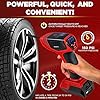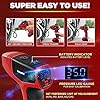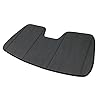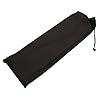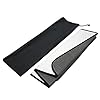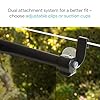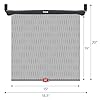Table of Contents
There’s a moment every off-road enthusiast dreads: you’re stuck, the terrain is unforgiving, and your winch becomes your only lifeline. But what if that lifeline fails because of an improper connection? Knowing exactly how to attach cable to winch drum isn’t just a mechanical task—it’s the fundamental skill that stands between a successful recovery and a dangerous equipment failure. A poorly secured winch line can lead to catastrophic consequences, from damaged equipment to serious personal injury.
This comprehensive guide will walk you through every aspect of properly securing both synthetic and steel cables to your winch drum. We’ll explore the critical safety considerations, provide detailed step-by-step installation methods, and reveal professional tips that go beyond basic instructions. Whether you’re installing a new winch, upgrading from steel to synthetic rope, or performing routine maintenance, this article will give you the confidence to create a secure, reliable connection that will perform when you need it most.
Understanding Winch Drum Attachment Fundamentals
Before diving into the specific techniques, it’s crucial to understand why the drum attachment is so critical to your winch system’s safety and performance. The connection point at the drum is the foundation of your entire winching operation—if this fails, nothing else matters.
Why Proper Drum Attachment Matters
The attachment point on your winch drum serves as the anchor for your entire pulling system. While it’s designed not to bear the direct load during winching (that’s what the wraps around the drum are for), a failure at this connection point can render your winch completely inoperative mid-pull . When the drum attachment fails, the entire spooled cable can loosen or detach, potentially causing the load to drop suddenly or creating a dangerous whipping scenario with steel cable.
Different winch manufacturers employ various drum attachment methods, but they generally fall into two categories: side flange attachments that use screws or bolts through the drum’s flange, or drum body attachments that utilize set screws, wedges, or plugs in the main barrel of the drum . Understanding which type your winch uses is the first step to proper installation.
Synthetic vs Steel Cable: Key Differences in Drum Attachment
While the basic principle of securing the cable end remains similar, synthetic rope and steel cable have distinct requirements and considerations for drum attachment:
Steel Cable Characteristics:
- Traditionally uses crimped terminals, pressed aluminum sleeves, or crimped electrical lugs
- More forgiving of minor drum imperfections but can suffer from hidden internal damage
- Heavier and stiffer, making initial spooling more challenging
- Can develop sharp broken wires that pose safety hazards
Synthetic Rope Advantages:
- Up to 80% lighter than steel cable while offering superior strength
- Safer when broken as it drops to the ground rather than whipping dangerously
- More flexible and easier to handle, especially in cold conditions
- Requires different attachment hardware and a hawse fairlead instead of rollers
The revolution in synthetic rope materials like Dyneema and Spydura has transformed winch line technology, offering tremendous tensile strength with significantly reduced weight . However, these advanced materials require specific attachment techniques to ensure optimal performance and safety.
Essential Safety Precautions Before You Begin
Working with winches involves significant force and potential hazards. These safety precautions are non-negotiable whenever you’re attaching cable to a winch drum.
Personal Protective Equipment (PPE) Requirements
- Hand protection: Always wear heavy-duty gloves when handling both steel cable and synthetic rope. Steel cables can have sharp broken wires, while synthetic ropes can generate enough friction during spooling to cause rope burns .
- Eye protection: Safety glasses are essential when working with winches. The tensioning process can release energy suddenly, and debris from the cable or winch could become airborne.
- Footwear: Steel-toed boots provide crucial protection if the winch handle slips or if you need to manage a heavy winch cable .
Workspace Preparation and Safety Checks
- Disconnect power: Ensure the winch is completely disconnected from its power source before beginning any installation work.
- Stable vehicle positioning: Park on level ground and engage the parking brake. If working on a vehicle that’s already stuck, ensure it’s properly stabilized before winch work.
- Inspect components: Carefully examine the winch drum for any sharp edges, burrs, or damage that could compromise the cable . Check the attachment hardware for wear or damage.
- Clear the area: Ensure no one is standing in the line of pull or near the winch cable during installation and testing.
How to Attach Synthetic Winch Rope to Drum
Synthetic winch rope has become the preferred choice for many off-road enthusiasts due to its safety advantages and easier handling. Here’s how to properly attach it to your winch drum.
Method 1: Dedicated Drum Attachment Systems
Several manufacturers offer specialized drum attachment systems designed specifically for synthetic ropes. These systems typically consist of a laser-cut stainless steel plate that secures to the drum flange .
Installation Steps:
- Prepare the rope end: Slide the drum attachment device over the tail end of the synthetic rope according to manufacturer instructions.
- Create the tail lock: Push approximately 7-8 inches of the rope tail back through the center of the braided rope to create a secure lock that prevents the attachment from pulling out .
- Position the attachment: Place the assembly against the winch drum, aligning it with the mounting hole in the drum flange.
- Secure with hardware: Use the provided screw (often metric M6 or SAE 1/4-20) to fasten the attachment to the drum. Critical note: Using a screw that’s too long can damage your winch, so always use manufacturer-provided or properly measured hardware .
- Orientation matters: Position the attachment so the short tail of rope will lay across the width of the winch drum surface, allowing the first layer of spooled rope to bed and grip the tail for maximum security .
Method 2: Traditional Knot Method
If your synthetic rope didn’t come with a dedicated attachment system, a properly tied knot can provide a secure connection.
Secure Knot Technique:
- Thread the rope: Feed the synthetic rope through the drum’s retention hole from the inside out.
- Tie a figure-eight knot: Create a figure-eight knot on the outside of the drum, leaving about 6 inches of tail beyond the knot .
- Test the security: Before proceeding with spooling, pull firmly on the rope to ensure the knot is secure and won’t slip under tension.
- Document the process: Take photos at each step for future reference during maintenance or reinstallation .
Spooling Synthetic Rope Under Proper Tension
Correct spooling is crucial for synthetic rope performance and longevity. Unlike steel cable, synthetic rope requires careful attention to tension and layering to prevent binding and damage.
Optimal Spooling Procedure:
- Initial alignment: Ensure the rope feeds straight onto the drum through a hawse fairlead (never use roller fairleads with synthetic rope as they can cause damage) .
- Consistent tension: Have a partner walk backward with the rope while maintaining about 15-20 pounds of tension .
- Slow and controlled: Wind the rope onto the drum in slow, controlled bursts, carefully monitoring the layering to ensure even distribution.
- Layer management: Maintain even spacing between wraps to prevent subsequent layers from pushing down into lower layers, which can crush the rope and cause damage .
- Tension setting: Samson Rope recommends approximately 50 lbs of initial winding tension to prevent slipping between turns when tension is applied .
How to Attach Steel Cable to Winch Drum
While being gradually replaced by synthetic rope in many applications, steel cable remains a durable, cost-effective option that requires specific attachment techniques.
Common Steel Cable Attachment Methods
Crimped Terminal Connections:
Many standard winches with steel cable use a crimped-on electrical lug, pressed aluminum tube, or crimped terminal that attaches to the drum with a screw through the drum flange . These provide a mechanical connection point but can be less robust than dedicated synthetic rope attachments.
Drum Plug and Set Screw Method:
Some winches use a wedge or plug with a set screw that secures directly into the main body of the drum . This method captures the cable end within the drum itself rather than at the flange.
U-Bolt Side Flange Attachment:
Another common approach uses a U-bolt that passes through the side of the drum flange, clamping the cable end in place . This method provides a strong mechanical connection but requires careful attention to avoid crushing the cable.
Step-by-Step Steel Cable Installation
- Inspect the cable: Check for any fraying, kinks, or damage before installation. Never install a compromised steel cable.
- Prepare the end: Ensure the crimped terminal is securely attached and undamaged. If replacing hardware, use appropriate crimping tools for a secure connection.
- Position the cable: Feed the cable through the fairlead and align it with the drum attachment point.
- Secure the connection: Use the appropriate hardware (screw, U-bolt, or set screw) to fasten the cable end to the drum according to your winch manufacturer’s specifications.
- Apply initial tension: Before spooling the remaining cable, apply moderate tension to ensure the connection is secure.
Spooling Steel Cable Correctly
Proper spooling technique for steel cable shares some similarities with synthetic rope but has distinct considerations:
- First layer foundation: The initial layer must be wound tightly and evenly across the drum, as this provides the foundation for all subsequent layers.
- Tension application: Maintain consistent tension during spooling to ensure tight, neat wraps that won’t loosen during use.
- Level winding: Wind the rope evenly without spaces across the drum, with each subsequent layer following the “valleys” between turns on the previous layer .
- Cross winding technique: To prevent the rope from diving into lower layers under load, some experts recommend cross winding after every two layers by quickly pulling the rope across the drum to create a crossing pattern that acts as a barrier .
Critical Maintenance and Inspection Protocols
Regular maintenance and inspection are essential for safe winch operation, regardless of your cable type.
Synthetic Rope Maintenance
Cleaning and Inspection:
- Perform visual inspection after each use, checking for fraying, discoloration, or damage .
- Clean with mild pH-neutral soap and lukewarm water every 90 days or after heavy use in muddy conditions .
- Never use harsh chemicals or pressure washers, as these can damage synthetic fibers .
UV and Environmental Protection:
- Store vehicles in garages or use winch covers when parked outside to protect against UV degradation .
- Allow ropes to air dry completely before storage to prevent mildew growth .
- Use sleeve protectors at any point where the rope contacts metal surfaces to prevent abrasion .
Steel Cable Maintenance
Rust Prevention and Inspection:
- Regularly inspect for broken wires, kinks, heavy rust, or corrosion .
- Lightly lubricate with appropriate cable lubricants to prevent rust and maintain flexibility.
- Check for deformation or crushing that could indicate internal damage.
End-for-End Rotation:
For both synthetic and steel cables, periodic end-for-end rotation (approximately every 6 months) changes the high-stress and wear points, significantly extending service life . During rotation, perform thorough inspection and cleaning.
When to Replace Your Winch Line
Knowing when to retire your winch line is crucial for safety. Replace your winch line immediately if you observe:
Winch Line Replacement Guidelines
Troubleshooting Common Winch Drum Attachment Problems
Even with proper installation, you may encounter issues with your winch drum connection. Here’s how to address common problems.
Synthetic Rope Specific Issues
Problem: Rope slipping on drum
Solution: Increase the number of wraps. While steel cables typically require at least four wraps on the drum, synthetic ropes like AmSteel Blue need at least eight wraps due to their lower coefficient of friction .
Problem: Difficulty spooling tightly
Solution: Ensure you’re maintaining adequate tension (15-20 lbs) during spooling and consider using a tensioning device or having a helper maintain tension.
Problem: Rope binding between layers
Solution: This often results from improper initial spooling. Unspool completely and restart with proper tension and level winding technique.
Steel Cable Specific Issues
Problem: Cable digging into lower layers
Solution: Use the cross-winding technique—after two level-wound layers, quickly pull the rope across the drum to create a crossing pattern that prevents diving .
Problem: Kinks forming in cable
Solution: Avoid continuous winching in one direction, which can extend the lay of the rope and cause kinking or hockling. Alternate directions regularly to maintain rope balance .
General Winch Drum Issues
Problem: Attachment point loosening
Solution: Check that you’re using the correct hardware and that it’s properly torqued. For synthetic ropes with dedicated attachments, verify the tail is properly locked through the center of the rope .
Problem: Uneven spooling
Solution: This is often caused by inconsistent tension during spooling or an improperly aligned fairlead. Respool with consistent tension and check fairlead alignment.
Advanced Techniques and Professional Tips
Beyond basic installation, these professional tips will enhance your winching performance and safety.
Maximizing Rope Longevity
- Use proper fairleads: Always match your fairlead to your rope type—hawse fairleads for synthetic rope, roller fairleads for steel cable .
- Avoid sharp bends: Sharp bends significantly reduce rope strength. Ensure your winch line follows as straight a path as possible during use.
- Prevent abrasion points: Identify and protect any contact points where the rope rubs against surfaces. Use abrasion sleeves and regularly inspect these areas .
- Never use knots during recovery: Knots can reduce rope strength by up to 50%. Use proper rigging equipment instead .
Performance Optimization
- Pre-stretch new synthetic rope: When installing new synthetic rope, stretch it under tension before first use to set the fibers and ensure even spooling .
- Mark high-stress areas: Use colored whipping on areas of the rope that experience high stress during normal use, making these areas easy to identify during inspection.
- Carry spare attachment hardware: When heading off-road, include spare screws, bolts, or attachment parts specific to your winch system.
Final Safety Check and Verification
Before considering your winch ready for service, perform these essential verification steps:
- Connection test: With the winch securely powered and the vehicle properly positioned, engage the winch briefly under very light load to verify the drum attachment is secure.
- Full extension test: Extend and retract the entire length of rope several times under light load to ensure proper spooling across the full drum .
- Visual inspection: Check the attachment point after initial testing to ensure no loosening has occurred.
- Function test: Verify both in and out operations work smoothly without unusual noises or behavior.
Conclusion: Mastering How to Attach Cable to Winch Drum
Properly attaching cable to your winch drum is a fundamental skill that impacts every aspect of your winching operations. Whether you choose synthetic rope or steel cable, the principles remain the same: secure attachment, proper spooling under tension, and regular maintenance and inspection. The few minutes you invest in doing this job correctly can make the difference between a successful recovery and a dangerous failure.
Remember that your winch system is only as strong as its weakest point, and often that weak point is the connection between the cable and the drum. By following the detailed techniques outlined in this guide—from selecting the right attachment method for your cable type to implementing proper spooling and maintenance protocols—you’ll ensure your winch is ready to perform when you need it most.
The knowledge of how to attach cable to winch drum properly isn’t just about mechanical competence; it’s about responsibility—to yourself, your equipment, and anyone who might be in the vicinity during a recovery operation. With this comprehensive guide, you’re now equipped with the expertise to create secure, reliable winch drum attachments that will serve you safely through countless recoveries and adventures.





